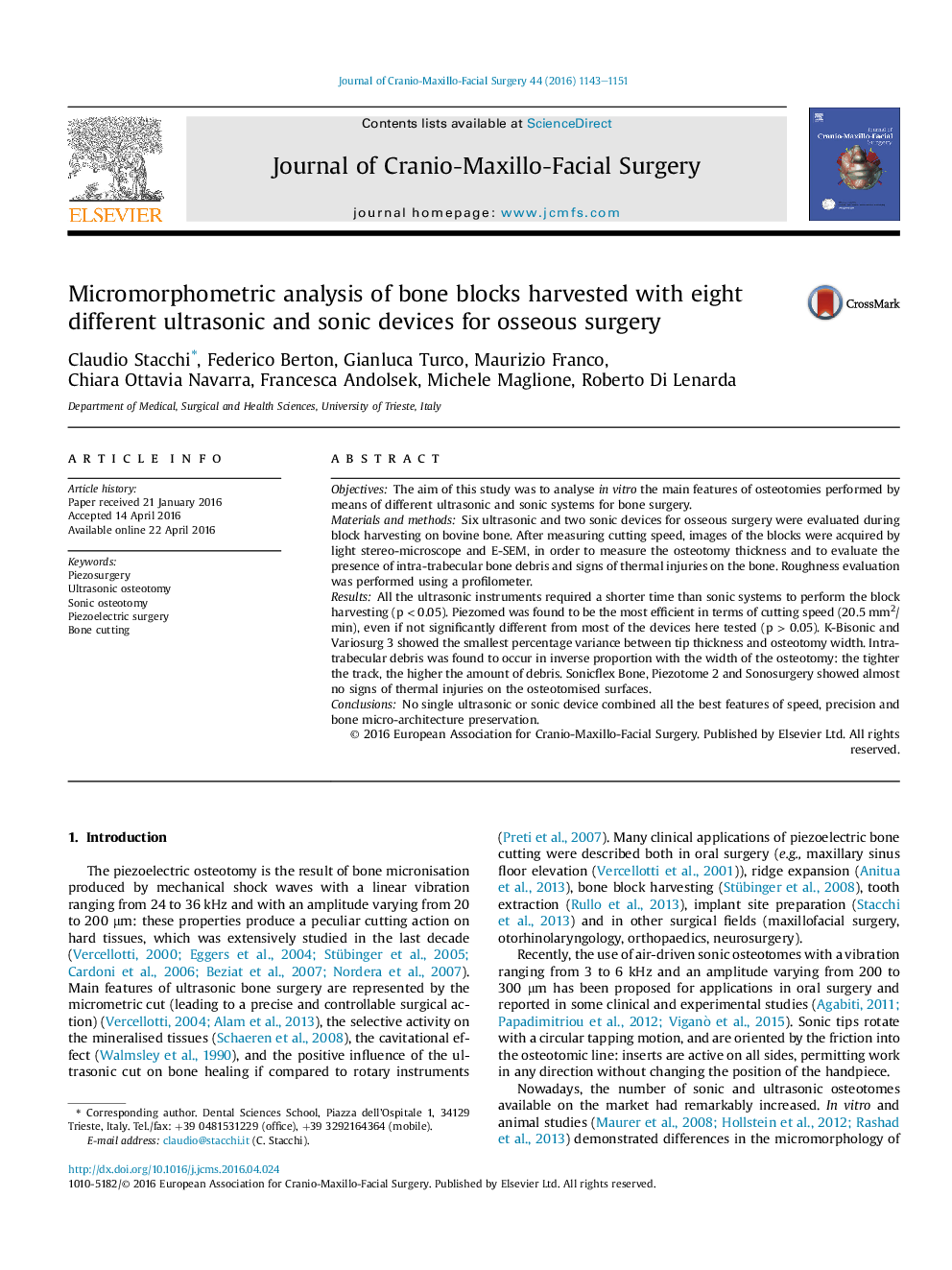| Article ID | Journal | Published Year | Pages | File Type |
|---|---|---|---|---|
| 3141975 | Journal of Cranio-Maxillofacial Surgery | 2016 | 9 Pages |
ObjectivesThe aim of this study was to analyse in vitro the main features of osteotomies performed by means of different ultrasonic and sonic systems for bone surgery.Materials and methodsSix ultrasonic and two sonic devices for osseous surgery were evaluated during block harvesting on bovine bone. After measuring cutting speed, images of the blocks were acquired by light stereo-microscope and E-SEM, in order to measure the osteotomy thickness and to evaluate the presence of intra-trabecular bone debris and signs of thermal injuries on the bone. Roughness evaluation was performed using a profilometer.ResultsAll the ultrasonic instruments required a shorter time than sonic systems to perform the block harvesting (p < 0.05). Piezomed was found to be the most efficient in terms of cutting speed (20.5 mm2/min), even if not significantly different from most of the devices here tested (p > 0.05). K-Bisonic and Variosurg 3 showed the smallest percentage variance between tip thickness and osteotomy width. Intra-trabecular debris was found to occur in inverse proportion with the width of the osteotomy: the tighter the track, the higher the amount of debris. Sonicflex Bone, Piezotome 2 and Sonosurgery showed almost no signs of thermal injuries on the osteotomised surfaces.ConclusionsNo single ultrasonic or sonic device combined all the best features of speed, precision and bone micro-architecture preservation.
